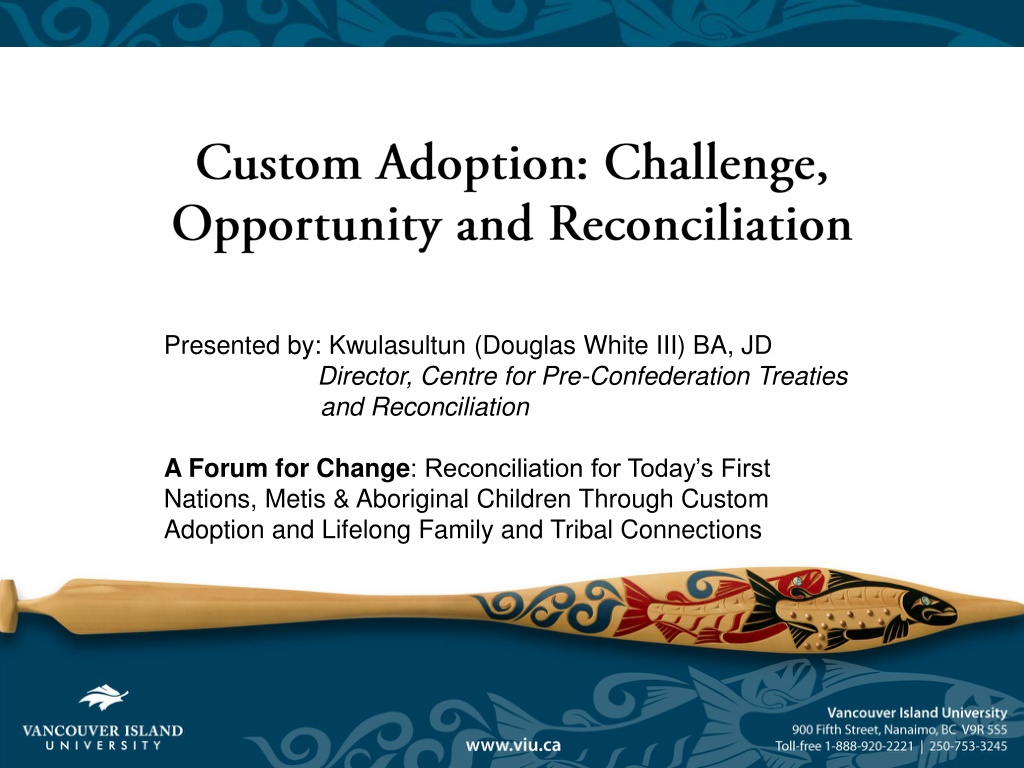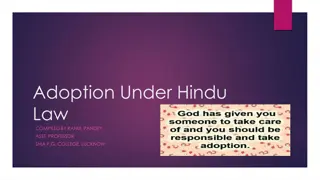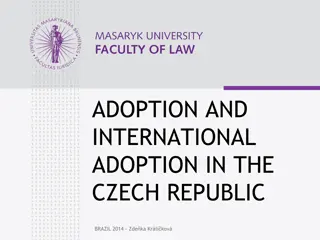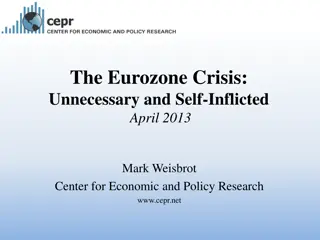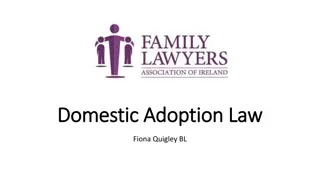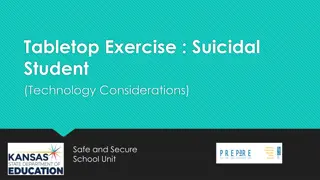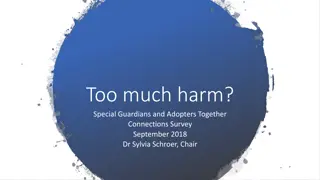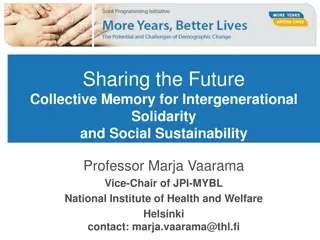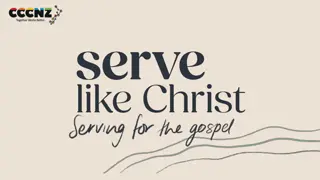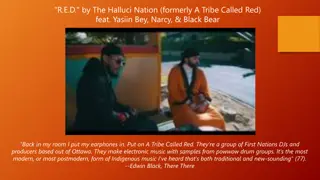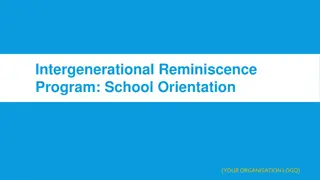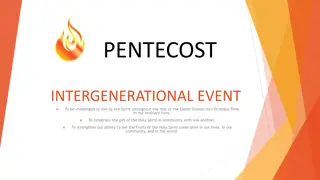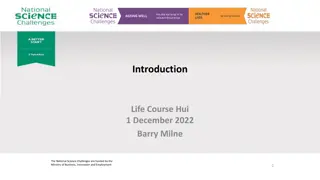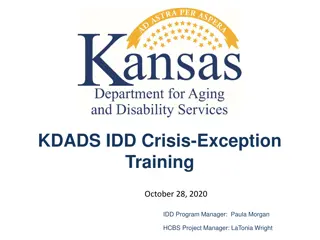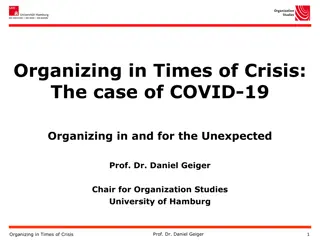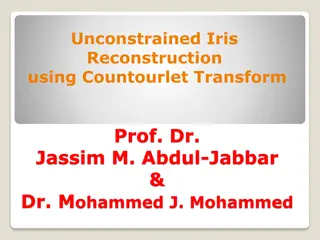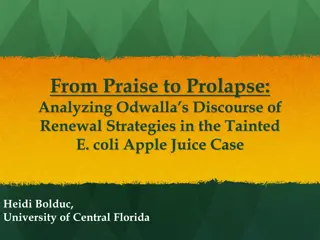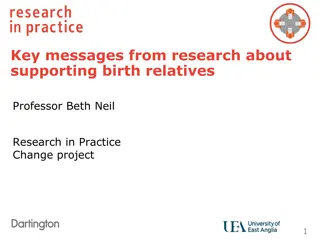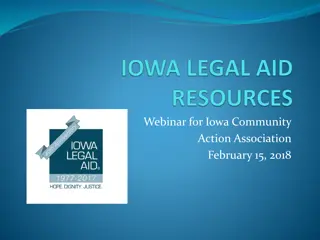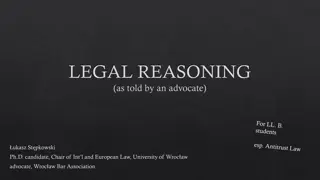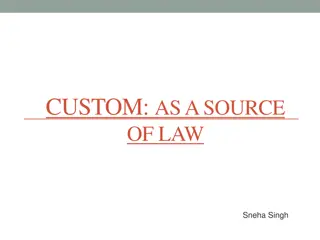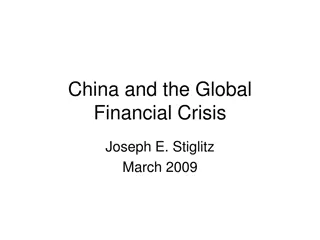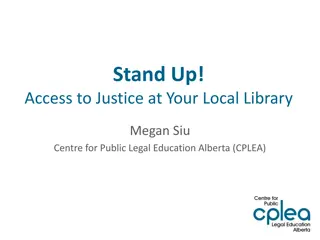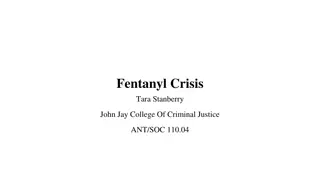Addressing Intergenerational Crisis Through Custom Adoption and Legal Recognition
The presentation emphasizes the importance of recognizing ancestral laws and customs of Aboriginal peoples in addressing the intergenerational crisis faced by First Nations, Métis, and Aboriginal children. It explores the history of custom adoption, Indigenous traditions, and legal provisions. Focusing on the Doctrine of Continuity, the discussion highlights the duties and rights of Indigenous peoples towards children, advocating for lifelong family and tribal connections. The challenge of children in care underscores the urgent need for reconciliation and change in current systems.
Download Presentation

Please find below an Image/Link to download the presentation.
The content on the website is provided AS IS for your information and personal use only. It may not be sold, licensed, or shared on other websites without obtaining consent from the author. Download presentation by click this link. If you encounter any issues during the download, it is possible that the publisher has removed the file from their server.
E N D
Presentation Transcript
Presented by: Kwulasultun (Douglas White III) BA, JD Director, Centre for Pre-Confederation Treaties and Reconciliation A Forum for Change: Reconciliation for Today s First Nations, Metis & Aboriginal Children Through Custom Adoption and Lifelong Family and Tribal Connections April 16, 2015 Nanaimo Conference Centre
Overview The Challenge We Must Address The Doctrine of Continuity Overview of Common Law of Custom Adoption What is Custom Law? History of Recognition of Custom Adoption in Courts Overview of Legal Provisions Recognizing Custom Adoption Adoption as Indigenous Tradition? Duties of Indigenous Peoples to Children Rights of Indigenous Peoples to Children Occupying the Field Custom Adoption Jurisdiction The American Example Conclusion 2
The Challenge We Must Address: Intergenerational Crisis "2011/12 (Dec. 2011) "2007/08" "2008/09" "2009/10" "2010/11 " "Children in Care at Year End" 9237 8959 8528 8373 8187 "Aboriginal Children in Care at Year End" 4788 4681 4643 4630 4584 "Total Aboriginal Child Population" 73842 74203 74533 74384 74715 "Data Source: Management Information System and Social Work System. Aboriginal population data is from BC Stats Aboriginal Identity Projection Model (medium scenario). BC Child population from PEOPLE 36." 3
The Challenge We Must Address: Intergenerational Crisis cont d 4
The Challenge We Must Address: Intergenerational Crisis cont d 5
The Challenge We Must Address: Intergenerational Crisis cont d 6
The Doctrine of Continuity The history of the interface of Europeans and the common law with aboriginal peoples is a long one. As might be expected of such a long history, the principles by which the interface has been governed have not always been consistently applied. Yet running through this history, from its earliest beginnings to the present time is a golden thread -- the recognition by the common law of the ancestral laws and customs [of] the aboriginal peoples who occupied the land prior to European settlement. Justice McLachlin in dissent, in R. v. van der Peet, [1996] 2 S.C.R. 507, at para. 263. 7
The Doctrine of Continuity Campbell v. British Columbia (Attorney General), 2000 BCSC 1123 If it need be said, the common law will be enforced by the courts. The common law has long recognized 'customs' or rules that have obtained the force of law in a particular locality. Agreements such as treaties negotiated and entered into by exercise of executive prerogative will be enforced by the courts. History, and a review of the authorities, persuades me that the aboriginal peoples of Canada, including the Nisga'a, had legal systems prior to the arrival of Europeans on this continent and that these legal systems, although diminished, continued after contact. Aboriginal laws did not emanate from a central print oriented law-making authority similar to a legislative assembly, but took unwritten form. Lord Denning, in R. v. Secretary of State For Foreign and Commonwealth Affairs at p. 123 likened aboriginal laws to 'custom': These customary laws are not written down. They are handed down by tradition from one generation to another. Yet beyond doubt they are well established and have the force of law within the community. 8
Overview of Common Law of Custom Adoption 9
Overview of Common Law of Custom Adoption 10
Overview of Common Law of Custom Adoption 11
Overview of Common Law of Custom Adoption 12
Overview of Common Law of Custom Adoption 13
Overview of Common Law of Custom Adoption 14
Overview of Common Law of Custom Adoption 15
Custom Adoption In Canada, the legal relationship known as adoption is a status created by statute. However, for many years, courts in Canada have recognized the legal validity of aboriginal customary adoptions. See Re Katie (1961), 32 D.L.R. (2d) 686 (N.W.T. Terr. Ct.); Re Beaulieu (1969), 3 D.L.R. (3d) 479 (N.W.T. Terr. Ct.); Re Deborah (1972), 28 D.L.R. (3d) 483 (N.W.T.C.A.), upholding (1972), 27 D.L.R. (3d) 225 (N.W.T.S.C.); Re Wah-Shee (1975), 57 D.L.R. (3d) 743 (N.W.T.S.C.); Re Taqornak (1983), 50 A.R. 237 (N.W.T.S.C.); McNeil v. MacDougal [2000] 2 W.W.R. 729 (Alta. Sur. Ct.); Manychief v. Poffenroth [1995] 3 W.W.R. 210 (Alta. Q.B.); Re B.C. Birth Registration No. 1994-09-040399 (1998) 45 R.F.L. (4th) 458 (B.C.S.C.); Prince v. Duncan [2000] 4 C.N.L.R. 249 (B.C.S.C.); and Casimel v. I.C.B.C. (1993) 106 D.L.R. (4th) 720 (B.C.C.A.). 16
Custom Adoption In the Northwest Territories there are adoptions in accordance with the Adoption Ordinance, adoptions in accordance with Indian custom and adoptions in accordance with Eskimo custom. The Eskimos, and particularly those in outlying settlements and distant camps, are clinging to their culture and way of life which they have found to be good. These people are in process of cultural change and have a right to retain whatever they like of their culture until they are prepared of their own free will to accept a new culture. In particular, although there may be some strange features in Eskimo adoption custom which the experts cannot understand or appreciate, it is good and has stood the test of many centuries and these people should not be forced to abandon it and it should be recognized by the Court. Re Katie (1961), 32 D.L.R. (2d) 686 (N.W.T. Terr. Ct.), paras. 9, 13. 17
Custom Adoption In Re Tagornak Adoption Petition [1984] 1 C.N.L.R. 185 (N.W.T.S) Marshall J. reviewed the same cases and stated: Having reviewed the authorities, certain concepts emerge. The Court's role is declaratory, certifying that an adoption by native custom has indeed taken place. Some of the criteria which the Court will apply to the case before it are: 1. 2. 3. that there is consent of natural and adopting parents; that the child has been voluntarily placed with the adopting parents; that the adopting parents are indeed native or entitled to rely on native custom; and that the rationale for native custom adoptions is present in this case as in Re Deborah, [1999] S.C.C.A. No. 117, above. [The specific rationale in Re Deborah was that adoption outside the statute was necessary for the survival or care of Eskimo children whose parents were unable to care for them or who had died.] 4. 18
Custom Adoption Justice Grist, in B.C. Birth Registration No 1994-09-040399,Re, [1998] 4 C.N.L.R. 7 (B.C.S.C.) the only reported case dealing with a s.46 order under the BC Adoption Act - adopted the four Tagornak factors and added a fifth: The fourth factor, the requirement that the "rationale for native custom adoption" be present would appear to mean that there is a recognized reason within the scope of the custom, whether it be to provide for children without parents, or otherwise, for the adoption to take place. In the case at bar, the birth mother is a young woman who decided that it would be best for her child that all parental rights and responsibilities be assumed by the Petitioners. The affidavit material indicates that this is a recognized reason for adoption within Carrier custom. In addition to these factors, I would add that it appears important to the process of recognition of customary adoption, that the relationship created by custom must be understood to create fundamentally the same relationship as that resulting from an adoption order under Part 3 of the Act. 19
Legal Provisions Recognizing Custom Adoption 20
Duties of Indigenous Peoples in relation to Children 21
Rights of Indigenous Peoples in relation to Children 22
Rights of Indigenous Peoples in relation to Children 23
Rights of Indigenous Peoples in relation to Children 24
Rights of Indigenous Peoples in relation to Children 25
